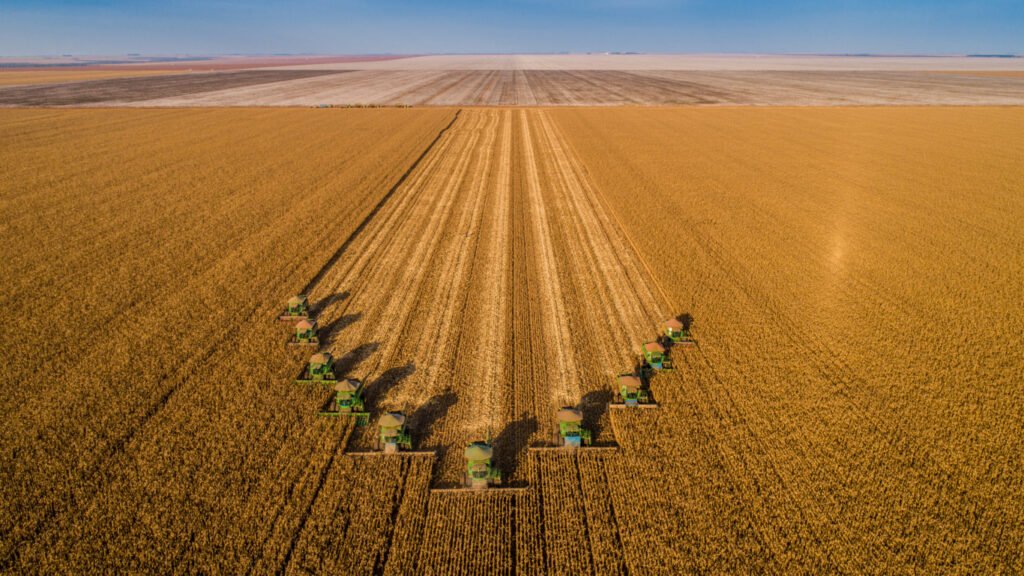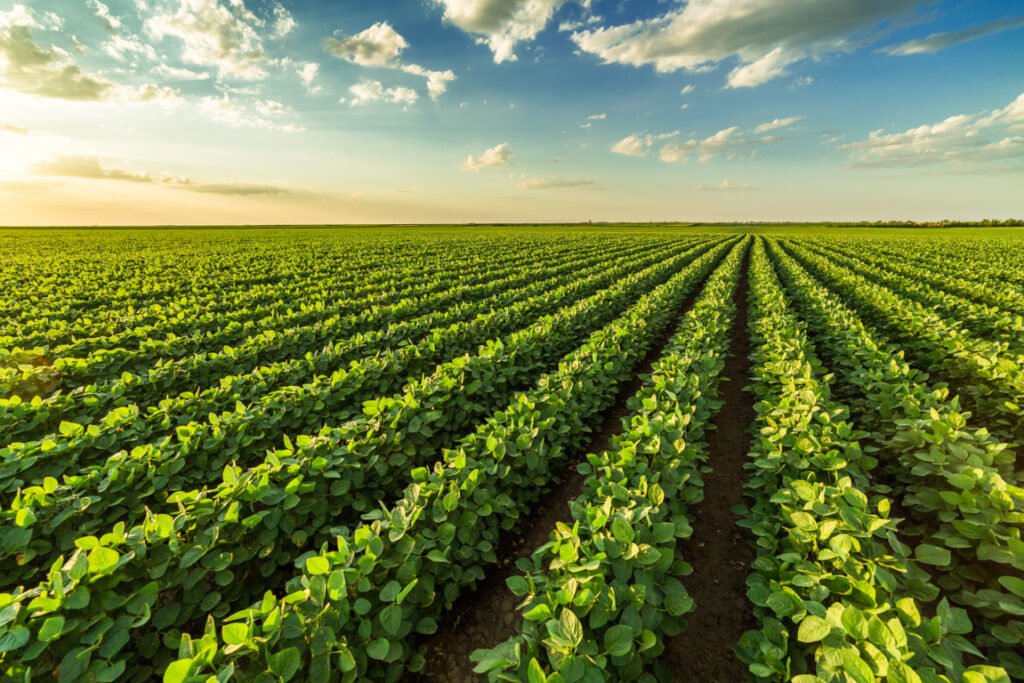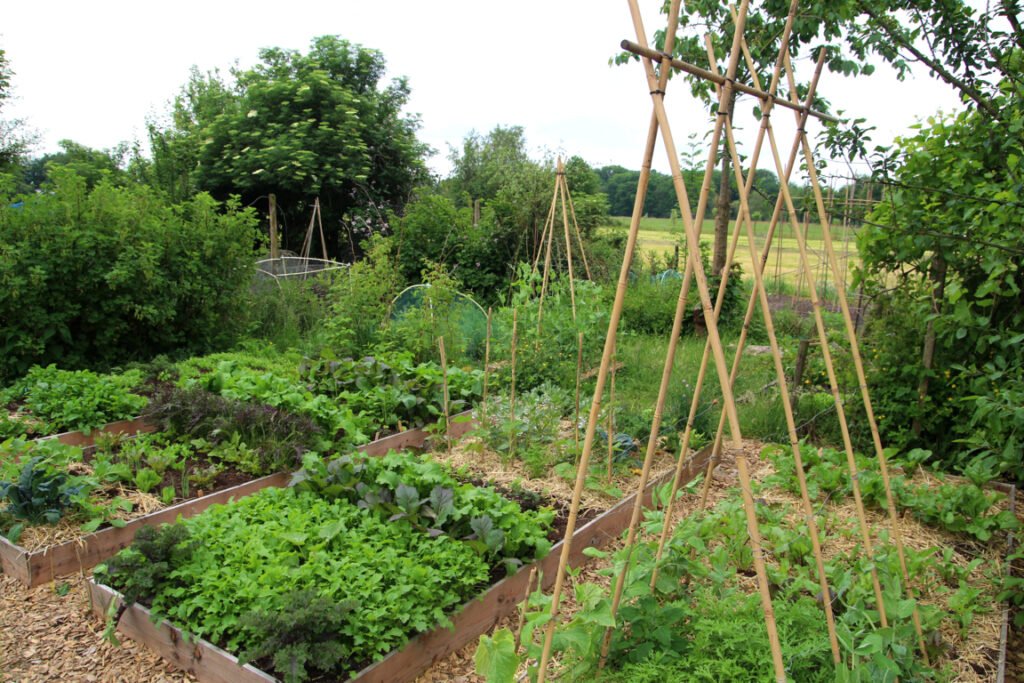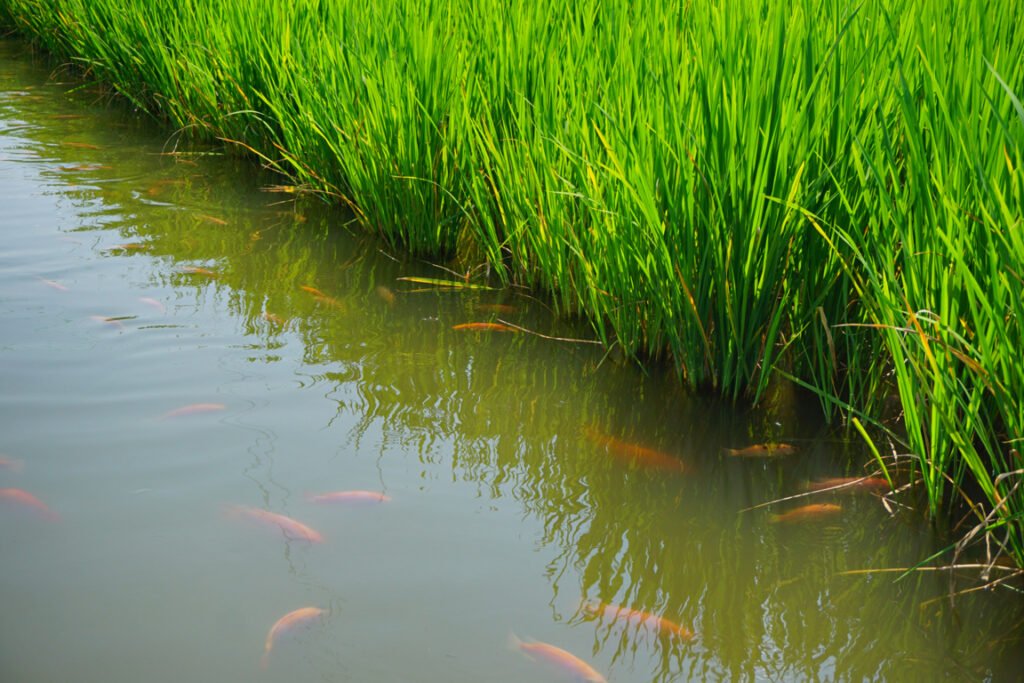
Having worked in an apple orchard for over a decade, I’ve observed how susceptible apple trees are to pest attacks and fungal disease infections when they aren’t sprayed on a regular schedule. It never seemed natural how the trees were under so much pest pressure and duress from disease. It took me a while to understand why.
The plight of our apple trees started to make sense when I learned about different types of agriculture, namely monocultures vs. polycultures.
Most conventional farming, like our apple orchard, is a monoculture. That means a single crop is cultivated exclusively on a farm, in a garden or the landscape. This growing practice serves a purpose and has its benefits, but it can also quickly lead to problems, like what we deal with in the orchard.
Polyculture on the other hand, is the antithesis of monocultures. A generous blend of various plant species is intermingled and planted together. The method is labor-intensive and often inconvenient, but the practice seems to yield positive results.
My suspicion that constant pest pressure and the spread of disease weren’t natural turned out to be correct. It just so happens that monocultures don’t occur in nature. They’re designed this way to make cultivating certain crops easy and efficient. Eventually, they end up having the opposite effect and harming the environment.
Now, I’ll discuss monoculture methods in deeper detail, listing the characteristics, benefits and disadvantages. Then, we’ll compare them alongside the aspects of polyculture, examine the two philosophies in different contexts and determine which is the better agricultural practice.
Features of Monocultures
Monoculture farming entails the extensive cultivation of the same crop across a large area, year after year. This is the practice primarily used in modern industrial agriculture. Planting uniform rows of a single crop increase planting, fertilizing, applying pesticides and harvesting efficiency.
Benefits of Monocultures
- Monocultures require less manual labor. Rows of crops are designed to accommodate the space needed for heavy machinery to ease the planting and harvesting process.
- The farmer is only responsible for the knowledge and care of a single plant species. It requires little understanding of the interaction of different varieties of plants in the ecosystem. This makes it easy to train workers and implement a monoculture as an agricultural system.
- The cultivation and harvest of standard cash crops are appealing for mass marketing. Yields harvested all at once are quickly delivered to large distributors and shipped to supermarkets. The nutritional value and flavor of the produce may be lacking, but the appearance and shelf life makes it appealing to vendors and consumers.
Disadvantages of Monocultures
- High yields are the goal, but frequently yields are low due to a lack of diversity and depleted soil.
- All of the nutrients in the soil are rapidly exhausted due to overfarming with a single crop. The practices of cover cropping and crop rotation are not incorporated. Only synthetic fertilizers are used to feed the soil, which does not offer the benefits of organic material. The soil lacks substance and the ability to absorb fertilizers, leading to chemical runoff, and polluting nearby waterways.
- More water is required because the soil cannot retain it.
- Due to the light and dusty consistency of the soil, erosion becomes a problem during windy conditions and heavy rain.
- Organic matter is not introduced into the soil, which prevents the development of a healthy, living microbiome.
- The demand for increased amounts of chemical fertilizers and pesticides harms the environment.
- The use of machinery for cultivation and harvest, plus the shipment of fertilizer and pesticide, leads to overconsumption of fuel, energy and other resources.
- Total crop failure is a threat because the spread of pests and diseases face no resistance due to the absence of crop diversity.
- Profits are entirely dependent on the market price of a single crop.

Features of Polycultures
Polyculture farming includes multiple varieties of crops in the same growing space. The intention is to incorporate more biodiversity by imitating the natural landscape. Techniques like intercropping, companion planting and succession planting are implemented to maximize space and time.
This practice balances the needs of all crops through cooperation, resulting in a balanced ecosystem.
Read more about the intriguing details of polyculture farming.
Benefits of Polycultures
- Crops planted with various other species will have a more complex nutritional profile.
- It is a boon to the microbiome in the soil. Microorganisms and beneficial bugs, like worms, are drawn to diverse soils.
- The land is utilized more efficiently and thoroughly, and there is no wasted space.
- Pests and diseases are almost nonexistent because they cannot rapidly spread through such a diverse planting.
- Companion crops help each other grow by attracting beneficial insects and deterring harmful pests.
- Pollination levels are vastly improved.
- The varying root zone depths of different crops allow more of the soil to be utilized.
- Some cover crops are considered “dynamic accumulators.” Through their natural processes, these remarkable plants make certain nutrients available that wouldn’t otherwise be accessible.
- Weeds will be discouraged from entering the growing space and smothered by valuable cover crops that fill in open spaces.
- Cover crops prevent erosion and retain moisture while feeding and conditioning the soil.
- Diverse plantings are protected against low yields and crop failures. It’s not a major concern if one variety does not perform well.
- In general, many species planted together create a symbiotic environment and complementary community.
Disadvantages of Polycultures
- The system will inherently be much more labor intensive. Specific farm equipment and automating tasks may not be an option.
- Supervising and controlling daily tasks becomes more complex.
- Understanding the interplay between two or more plants is critical. It can be challenging to juggle the needs of one without affecting others.
- The initial planning, investment and setup of a polyculture system will be more prohibitive than a monoculture.
Let’s investigate how they play out in a different industry to broaden our perspective and view these two practices through a slightly different lens.

How the two methods are utilized in the fish farming industry is a debated topic, with similar pros and cons. Let’s look into how both practices affect the fish-raising process.
Monoculture Fish Farming Advantages
- Easier to feed the fish.
- The age, size and sex of the fish are easily controlled.
- Conditions can be tailored to a specific type of fish, maximizing production.
- It’s easier to selectively harvest fish when they are ready for market.
- Easier to establish and maintain for farmers with limited space.
- Monoculture fish farms tend to generate higher profits.
Monoculture Fish Farming Disadvantages
- The fish pond is not as naturally productive when raising one type of fish.
- Ecology and space in the pond are not as diverse as they could be.
- Cannibalism can occur among fish of the same breed.
- Disease outbreaks can be devastating to a monoculture school of fish. The disease spreads quickly without the resistance of biodiversity, potentially destroying an entire crop.
- Water quality declines at a rapid pace.
- Species of fish depend on natural food. Any disruption or shortage in the supply can negatively affect fish growth and production.
Polyculture Fish Farming Advantages
- The use of resources is carefully managed and reduced.
- When operating correctly, polycultures reduce the risk of loss and have the potential to produce higher profits.
- The pond is used to its fullest potential.
- Water quality is more stable.
- Polycultures are better for the environment and are generally sustainable systems.

Polyculture Fish Farming Disadvantages
- Managing the fish and resources becomes more involved and labor intensive.
- Farmers need to know about different fish types and how they interact.
- Inputs and yields are not streamlined like in a monoculture.
- There is less control over the age, size and sex of the fish.
This list of pros and cons demonstrates the similarities between agriculture and aquaculture. It’s pretty interesting to observe the parallels between the production of plants and fish.
Marketability, ease of production and limited required knowledge are reflected in plant production and fish farming.
Biodiversity, the health of the environment, more active labor and a deeper understanding of natural systems are emphasized in the polyculture systems of both industries.
One last perspective on this age-old debate is worth exploring. And it’s the practice of sustainable agriculture in ancient Greece.
Monoculture vs. Polyculture in Ancient Greece
In ancient Greece, farming was not controlled by the state or large corporations. This necessitated the establishment and maintenance of many small, self-sufficient farms.
Adding to the need for maximizing production was the fact that only 20% of the land in Greece was arable or able to be cultivated. For this reason, the usable land had to produce all of their staple crops.
Wheat and barley crops were interplanted due to the tendency of one or the other to fail every few years. Millet was another crop grown in areas that received more rainfall. Pulses like lentils, chickpeas and broad beans were incorporated into the planting fields.
Vines for winemaking and olives for oil production were prioritized as they are tolerant of dry conditions and could survive for years without rain. Fruits (apples, figs, pears, pomegranates, quinces), vegetables (onions, garlic, cucumbers, greens) and nuts (walnuts, almonds) were grown on a smaller scale at private residences. Here they were easier to irrigate with tiny channels and cisterns.
Crop rotation was a regular practice, and fields were left fallow to give nutrients and moisture a chance to build back up. Crops like beans and lentils were grown and harvested, with the remnant organic matter turned back into the soil as fertilizer.
Manual labor was in high demand during planting and harvesting times. Many tools were implemented to make these tasks less physically arduous.
The ancient Greeks did not have the option of planting large-scale monocultures, and it’s doubtful they would if they had the means. Out of necessity and practicality, along with an understanding of their climate and environment, they thrived by practicing polyculture farming. Their antiquated wisdom still speaks to us today, informing us on what path contemporary agriculture should choose.

Monoculture vs. Polyculture Farming Methods: Which Practice Wins Out?
Monoculture farming may have seemed like the best practice in previous generations during the emergence of industrial agriculture. Indeed in the past, it has been a lucrative venture.
But like the old family orchard, monocultures of the present struggle to stay viable and turn a profit while relying on a single crop. Farms that diversify their crops, and revenue streams, have shown that this business model can thrive.
Monoculture farms rely on bringing a single product to the marketplace, where competition is higher and prices are driven down. These conditions are exacerbated by fertilizer and pesticide expenses, while total wipeout by pests and diseases still threatens. The cost of fuel and labor also continues to rise.
The sensible thing to do, as our apple orchard aims to accomplish now, is: to branch out into cultivating new crops that expand the harvesting period and increase access to more customers.
It’s a matter of survival for the agricultural industry and the environment itself.
Frequently Asked Questions (FAQ)
What is better for the environment: Monocultures or polycultures?
Polycultures incorporate numerous species and varieties of crops which helps to build microbial activity in the soil and promote the population of pollinators and beneficial insects. Polyculture farming reduces erosion and chemical runoff using far less fertilizer, pesticide and destructive agricultural practices.
Why do some farmers prefer monoculture?
Farmers will spend less time working in the field using monoculture practices. Seeds, fertilizers and pesticides are purchased in bulk, while planting and harvesting are streamlined. Crops can be harvested all at once and sold quickly on a large scale.
What are some common crops grown in a monoculture system?
Wheat, corn and soy are grown on massive-scale industrial farms throughout the US. They require tons of fertilizer and pesticide spray. These particular crops are becoming increasingly genetically modified.
How prevalent are monocultures in the US?
It is a common practice in the US. About 440 million acres of farmland are cultivated as monocultures.



